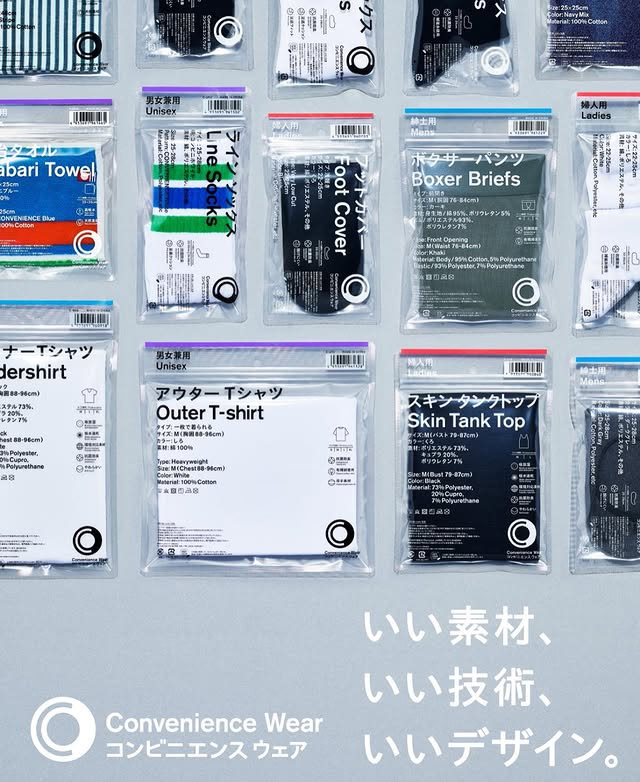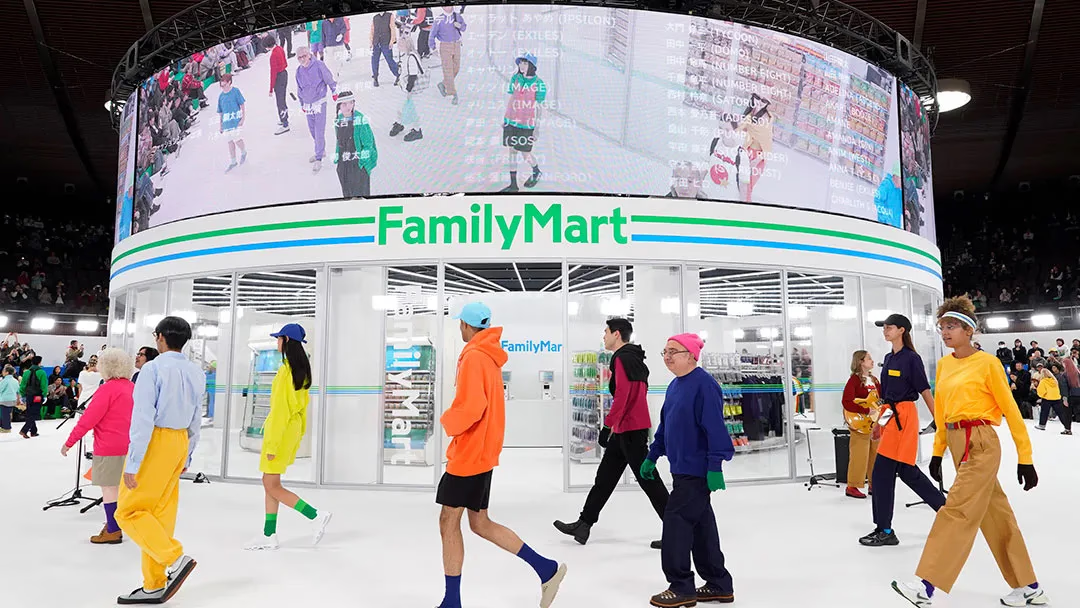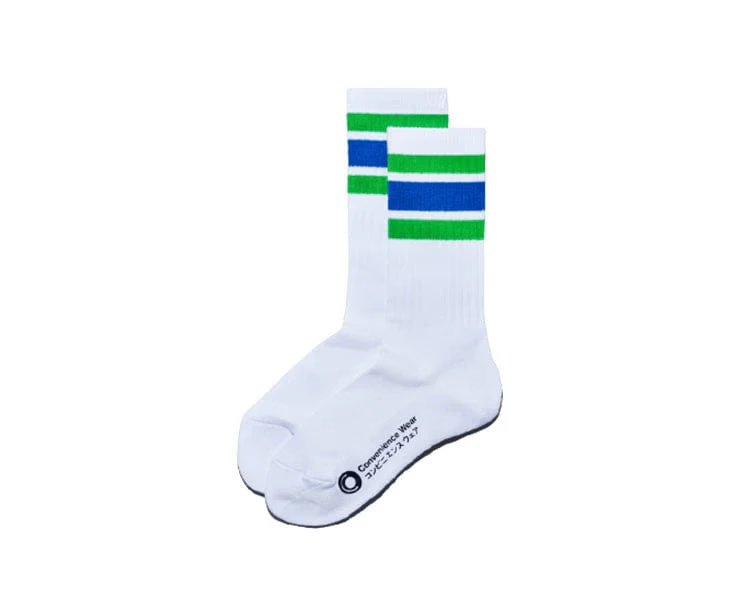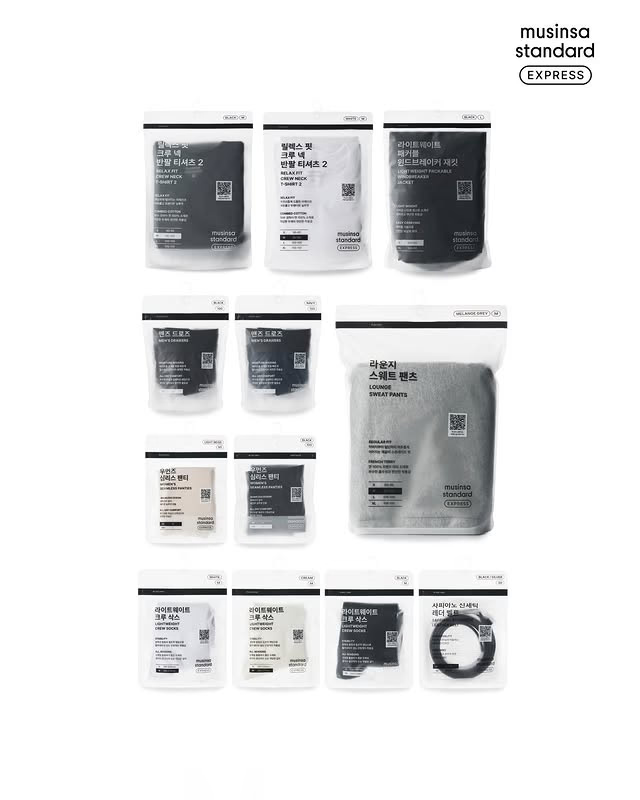Back in the day, popping into the local mom-and-pop shop for snacks or groceries was just part of daily life. Then came convenience stores, and we got hooked on the convenience of grabbing what we needed 24/7. From ramen and onigiri to drinks and even basic household items, convenience stores became indispensable to our lives. But did you know that these days, convenience stores are evolving beyond just selling stuff? They’re becoming platforms that curate and offer lifestyles.
In Japan, convenience stores have already gained recognition as “quasi-fashion retailers” for their successful foray into apparel sales. FamilyMart’s success story in clothing is particularly noteworthy. Selling clothes at convenience stores… it might still sound a bit unfamiliar. But in Korea, GS25, another convenience store giant, is teaming up with fashion platform Musinsa to jump into the apparel game.
Let’s dive into FamilyMart’s secrets to success in apparel, explore why GS25 is partnering with Musinsa for clothing sales, and forecast the future of apparel sales in convenience stores.
👪 FamilyMart: Turning Convenience Stores into Fashion Trend Hubs
Turning Crisis into Opportunity: The Challenge of Apparel Sales
Trends in Japan Convenience Store Market Size
2017 - 2024 (through August)
In the mid-2010s, the number of convenience stores in Japan surpassed 50,000, sparking talk of market saturation. With a shrinking population and intensifying competition, finding a breakthrough for growth was tough. Desperate for new growth engines, FamilyMart turned its attention to a new possibility: apparel sales. They started by targeting the niche market of “emergency clothing,” selling items like underwear and socks for those sudden needs. But they didn’t stop there. Expanding into everyday wear like joggers, shorts, and t-shirts, they carved out a new space as quasi-fashion retailers, shedding its old skin and embracing trendy apparel.
Fashion Meets Accessibility and Convenience
FamilyMart’s transformation wasn’t just about adding new products. It was about accurately reading changing consumer trends. Instead of shopping at department stores or malls, more and more consumers were looking for quick and convenient shopping closer to home.
Convenience stores, especially with their 24/7 operation, have a massive advantage. Being easily accessible to anyone, anytime, is a huge merit as a fashion retail channel. FamilyMart nailed this point. By combining accessibility and convenience with fashion, they captured consumers’ hearts, essentially opening a 24/7 fashion boutique.
Bold Collaborations, Edgy Designs Inject Fashion Flair

As FamilyMart dived deeper into the fashion market, their first move was collaborating with “professional designers.” In 2021, they brought in Hiromichi Ochiai, the designer of the renowned fashion brand Facetasm, as their creative director. Instead of settling for plain designs, they went for edgy, unique styles. Their collection, featuring tees, tank tops, shorts, socks, and more, retailed at affordable prices from 390 to 990 yen (approximately $2.50 to $6.50 USD), and flew off the shelves.
Convenience Store Runway Shows?

But they didn’t stop there. FamilyMart became the first convenience store chain to host a fashion show, revamping their brand image. The fashion show held at Yoyogi National Stadium in November 2023 was a sensation. Eighty models walked the runway, showcasing 50 different styles. With the concept of “FamilyMart of the Future,” the show delivered a fresh shock, completely shattering preconceptions of what a convenience store could be. Through this fashion show, FamilyMart firmly planted the image of being a “fashion trendsetting brand,” not just a place to buy stuff. Who would call convenience stores “cheap” now?
Surpassing 10 Billion Yen in Sales in a Year, Emerging as a Fashion Market Force

FamilyMart’s bold transformation led to remarkable success. In 2023, their apparel business surpassed 10 billion yen (about $65 million USD) in sales, emerging as a new powerhouse in the fashion market. Socks, in particular, became a mega-hit item with over 20 million pairs sold cumulatively.
Convenience is now recognized as one of the top 3 keywords dominating the 2025 fashion market, alongside “AI” and “Utility.” FamilyMart’s success story shows that convenience stores can evolve beyond simple retail channels to become key platforms driving fashion trends.
🤝 GS25 Takes on the K-Convenience Store Fashion Market with Musinsa
The Korean Convenience Store Market Dilemma
Unlike Japan, the Korean convenience store market faces a slightly different landscape. Korea’s retail ecosystem is highly segmented, with a strong perception that “clothes are bought at clothing stores.” Convenience stores here generally still only carry emergency apparel like underwear, socks, and t-shirts. In this context, GS25’s move to partner with Musinsa and dive into fashion apparel sales is a bold challenge to the Korean convenience store industry. Can they pull it off?
GS25 and Musinsa: A Strategic Alliance

The collaboration between GS25 and Musinsa is a strategic choice to find new growth engines amidst the rapidly changing retail environment and to offer a differentiated shopping experience to their core customer base: Gen Z and Millennials. Daiso is already seeing huge success in the beauty and fashion markets. As consumers increasingly prefer places where they can shop affordably and easily, retail channels offering affordability and convenience are gaining traction.
GS25 wanted to bring Musinsa Standard products into its stores to strengthen its merchandise competitiveness in non-food categories, while Musinsa aimed to leverage GS25’s nationwide network of 18,000 stores to expand its offline customer touchpoints. It’s a win-win strategy where their needs perfectly align.
Musinsa Standard Express Line: A Calculated Move

GS25 is set to exclusively launch Musinsa Standard Express, a GS25-exclusive lineup, on March 2, 2025. A total of 12 popular Musinsa Standard items, including jackets, pants, t-shirts, belts, underwear, and socks, will be available for easy purchase at GS25.
GS25’s sales strategy focuses on phased expansion. Instead of rolling out nationwide from the start, they plan to begin at 3,000 stores in key commercial areas to carefully gauge market reaction. If the response is positive, they plan to expand the product range and extend sales nationwide. It’s a cautious yet clever strategy of testing the waters before diving in.
For Musinsa, this collaboration is a significant step in overcoming the limitations of online platforms and expanding its business offline. GS25 stores across the country offer a great opportunity to reach new customers in regions without Musinsa Standard offline stores.
📈 Convenience Stores Evolving into Lifestyle Platforms
From Clothes and Cosmetics to Pet Supplies? The Boundless Transformation of Convenience Stores
Convenience stores are no longer just “convenience stores”; they’re evolving into lifestyle platforms. Beyond food and daily necessities, they’re becoming spaces offering a diverse range of products and services covering the entire spectrum of consumer lifestyles, including fashion, beauty, and pet supplies. 7-Eleven has already introduced specialty stores focused on fashion and beauty, such as “Dongdaemun Dondon Branch” and “New Wave Origin Branch,” showcasing the new possibilities of convenience stores.
55,000 Stores vs. 1,500: Unmatched Accessibility is Key
Convenience stores’ biggest weapon is undoubtedly accessibility. As of the end of 2023, there were over 55,200 convenience stores nationwide! That’s an overwhelming number compared to Daiso’s approximately 1,500 locations. Furthermore, with more consumers preferring convenient shopping that saves time and effort, convenience stores are becoming an increasingly attractive shopping channel.
Changes in consumer lifestyles, like the rise of single-person households and the expansion of contactless consumption, are presenting new opportunities for convenience stores. GS25, with its robust offline network, can leverage synergistic effects through collaborations with various companies, further solidifying its position as a lifestyle platform.
How Far Will Convenience Store Transformation Go?
The success of FamilyMart’s apparel sales in Japan and the ambitious collaboration between GS25 and Musinsa in Korea showcase the innovative transformation of the convenience store industry. Japanese convenience stores have already established themselves as quasi-fashion retailers, and Korean convenience stores are also finding new growth engines by expanding into non-food categories.
The partnership between GS25 and Musinsa is expected to create win-win synergistic effects by combining the “accessibility” of convenience stores and the “product competitiveness” of fashion brands. Especially aligning with the “premium convenience” trend among Gen Z and Millennials, apparel sales at convenience stores are likely to expand further, accelerating the evolution of convenience stores into “lifestyle platforms.”
In an era where retail boundaries are blurring and online-offline integration is accelerating, what surprising changes will convenience stores bring to our lives in the future?